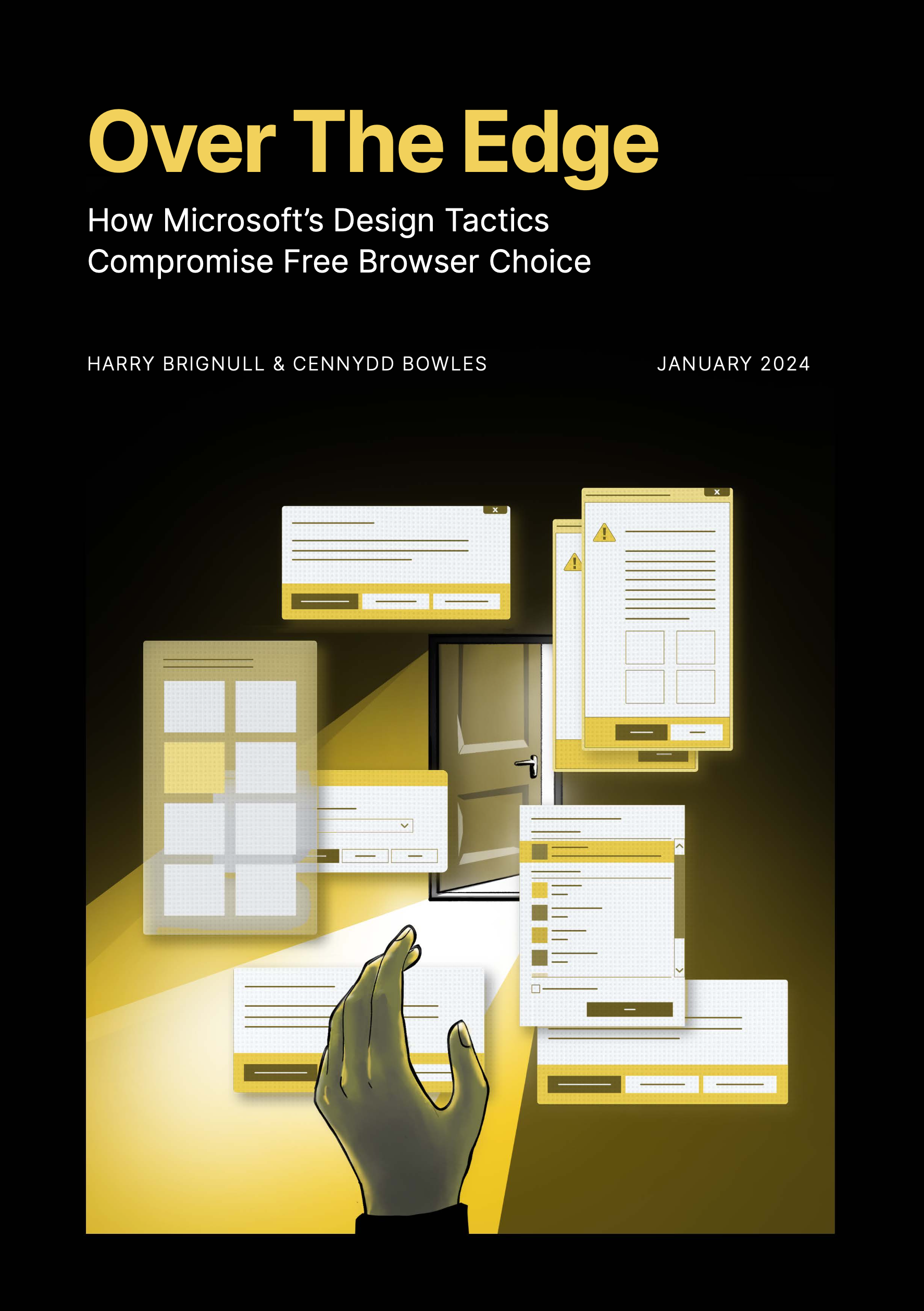Major new work: harmful design in browser choice
For a few months I’ve been working with the esteemed Harry Brignull to investigate design patterns in the browser space. Finally we can reveal the fruits of our labour: a major report, ‘Over the Edge: How Microsoft’s Design Tactics Compromise Free Browser Choice’.
User behaviour has become a battleground. In pursuit of competitive advantage, many tech firms employ various design techniques to encourage users to act in certain ways. Some of these strategies are acceptable, such as persuasive designs that merely provide information and leave the user in full control of their decision. However, some design techniques are problematic or even harmful.
Examining these patterns first-hand, and referring to a harmful design taxonomy evolved over many years and supported by academic research, we find Microsoft repeatedly uses harmful design to influence users into using Edge. The report describes how in significant detail.
Of all Microsoft’s tactics, the most objectionable for me is their dissuasive messaging injected directly into the Chrome download page. As we write, ‘for a browser vendor to interfere with the contents of a competitor’s website – or indeed any website – with neither due cause nor user consent is highly irregular and ethically indefensible.’
Harry and I go way back. Aside from being erstwhile Clearleft colleagues, I was tech reviewer for his book Deceptive Patterns and contributed some thoughts for his first presentation on the topic. We work well together. He knows the domain and its design strategies like the back of his hand, and performed a comprehensive job auditing the relevant software. I provided writing support, input on the ethical problems these patterns pose, and help connecting our findings to real-world harms.
Of course, we had to be mindful of ethics ourselves. The study was commissioned by Mozilla, who as a browser manufacturer clearly have interests in certain findings. But they were superb clients, and showed a deep respect for research integrity. They were understandably keen to share their previous findings with us, but there was never any doubt: as independent researchers Harry and I had full control of the report.
We’re proud of the result. I’m particularly pleased with how the report connects Microsoft’s behaviour patterns to harms, describes how these harms are likely to fall harder upon those already vulnerable, and provides deeper ethical grounding by describing these patterns’ reliance upon coercion, deception, or manipulation.
As far as I know, this is one of the most in-depth case studies of harmful and deceptive date to date. I hope it advances the debate on the topic and helps others do similar work. But more importantly, I hope Microsoft and regulators alike take note – and take action.
Links
Mozilla Research post: Over the Edge: The Use of Design Tactics to Undermine Browser Choice
A slide deck showing our primary findings: https://pitch.com/v/over-the-edge-ecyggr/
Press coverage
Microsoft Deploys 'Harmful Design' Tricks to Push Edge, Say Mozilla Researchers
Mozilla slams Microsoft for using dark patterns to drive Windows users toward Edge
(Note that, whatever a journalist might write, I am not a Mozilla researcher, nor have I ever been. Nor do we use the outdated term ‘dark pattern’ in the report.)
